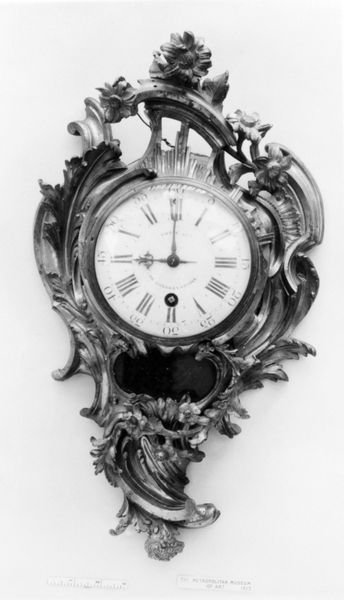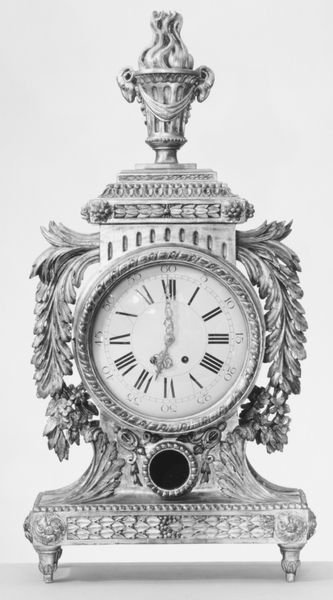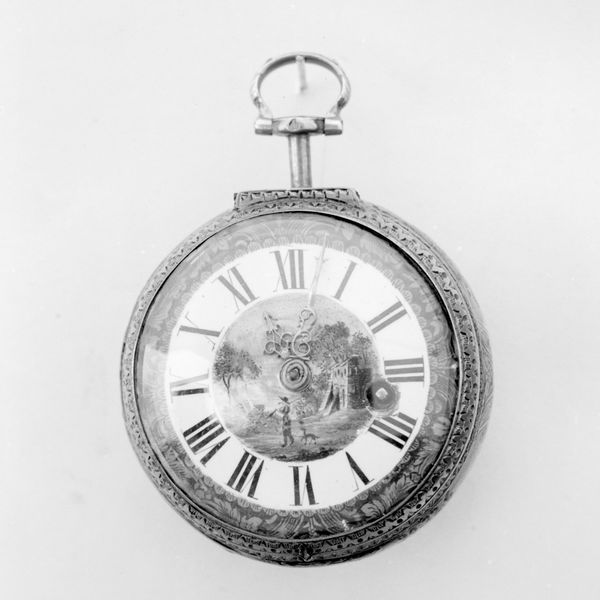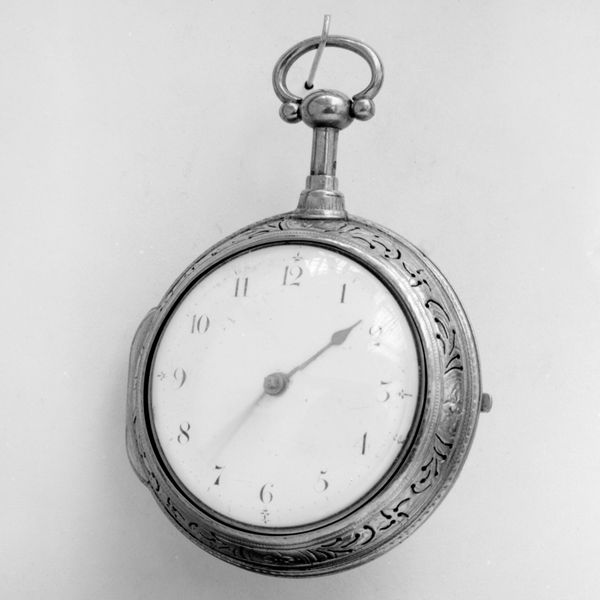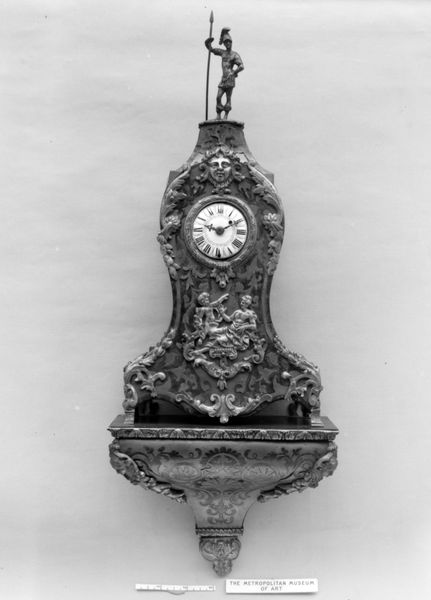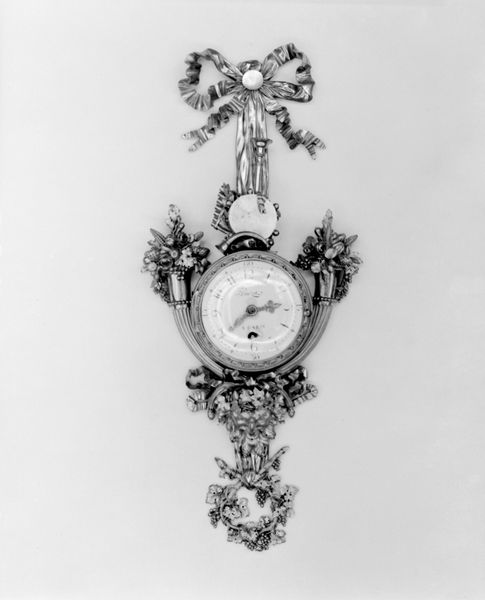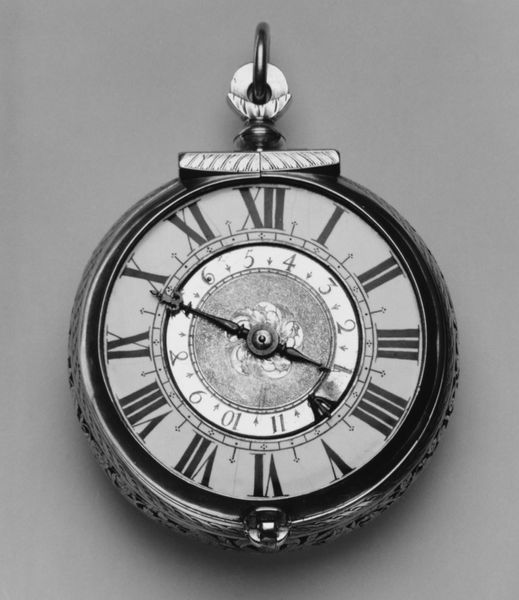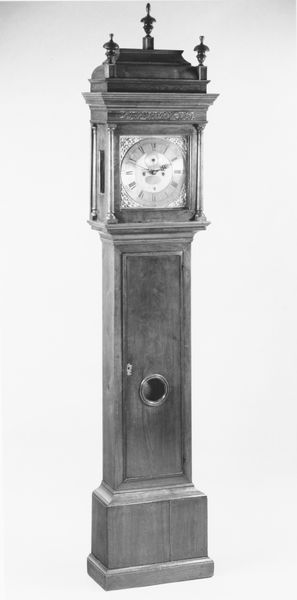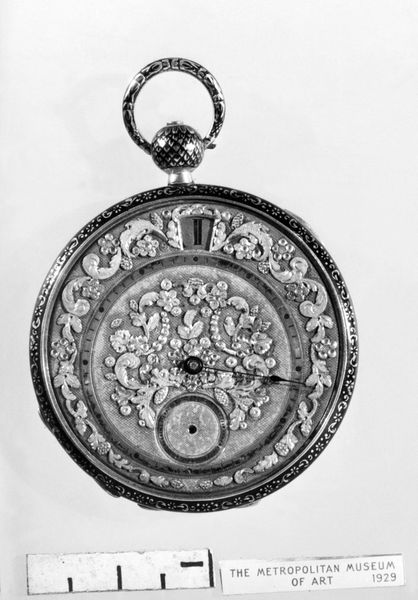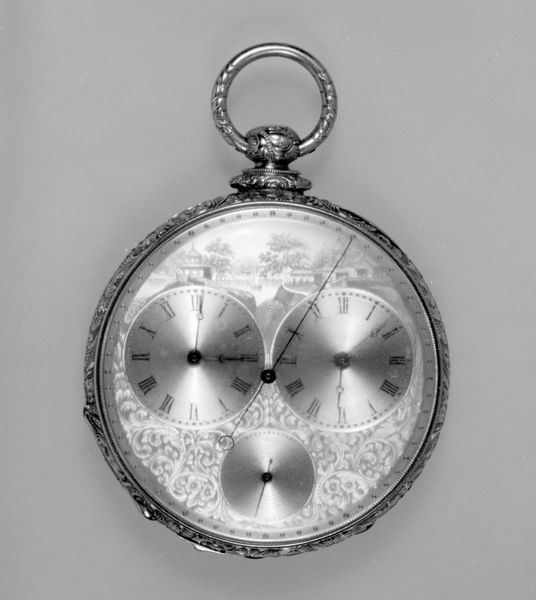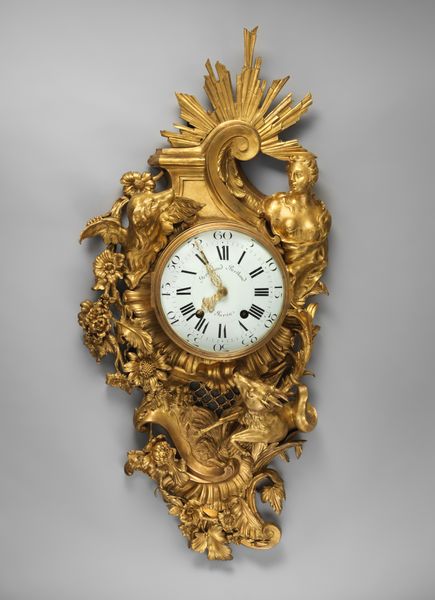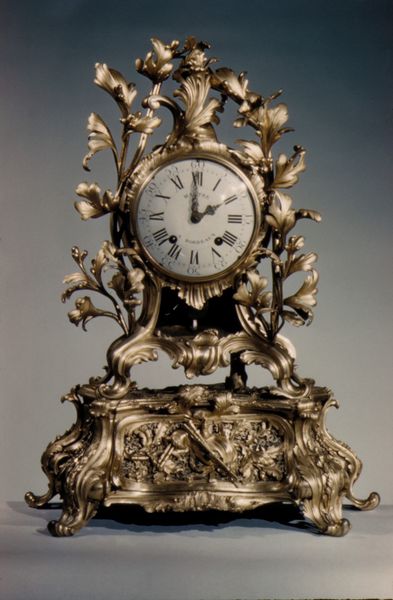
sculpture
#
form
#
sculpture
#
decorative-art
#
rococo
Dimensions: 43 × 25 in. (109.2 × 63.5 cm)
Copyright: Public Domain
This wall clock was made by Pierre-Philippe Barat, probably in Paris. Although it's undated, we can assume it was made sometime in the 1700's. Its construction demanded a range of skills. The clock's mechanism would have been made by a highly trained clockmaker. Then there’s the case itself, made of gilded bronze. Notice the complex naturalistic forms: flowers, leaves, and figures emerging from a craggy landscape. These would have been produced by specialist bronze casters and 'ciseleurs,' or finishers, capable of achieving extremely fine detail. Consider the division of labor that this implies: a hierarchy of skill, all coordinated to create an object intended to convey status. The heavy gilding would have been achieved by yet another artisan, applying gold leaf to the surface. It's a tour de force of specialized craft production, aimed squarely at a wealthy clientele. When you look at an object like this, you have to remember that its beauty belies the social realities that made it possible. The next time you look at decorative art, think about the skilled labor, the process, and the context. It will change how you see it forever.
Comments
No comments
Be the first to comment and join the conversation on the ultimate creative platform.
